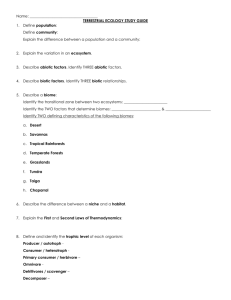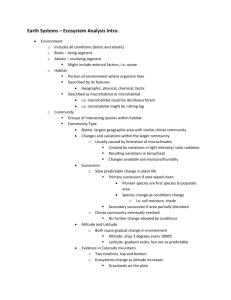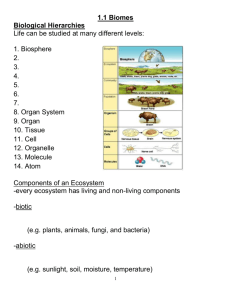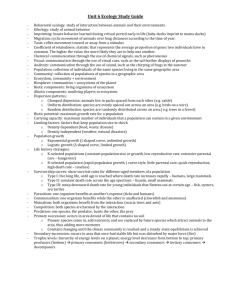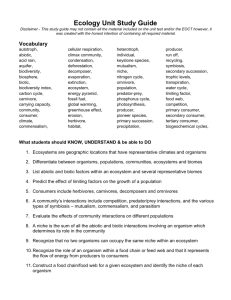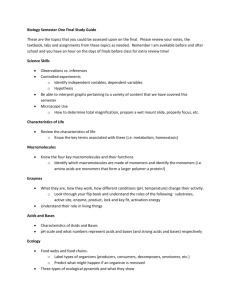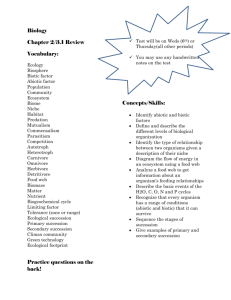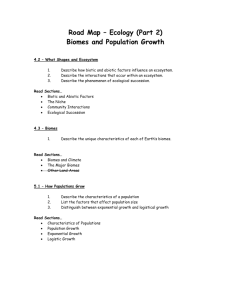Ecosystems and Biomes Study Guide
advertisement
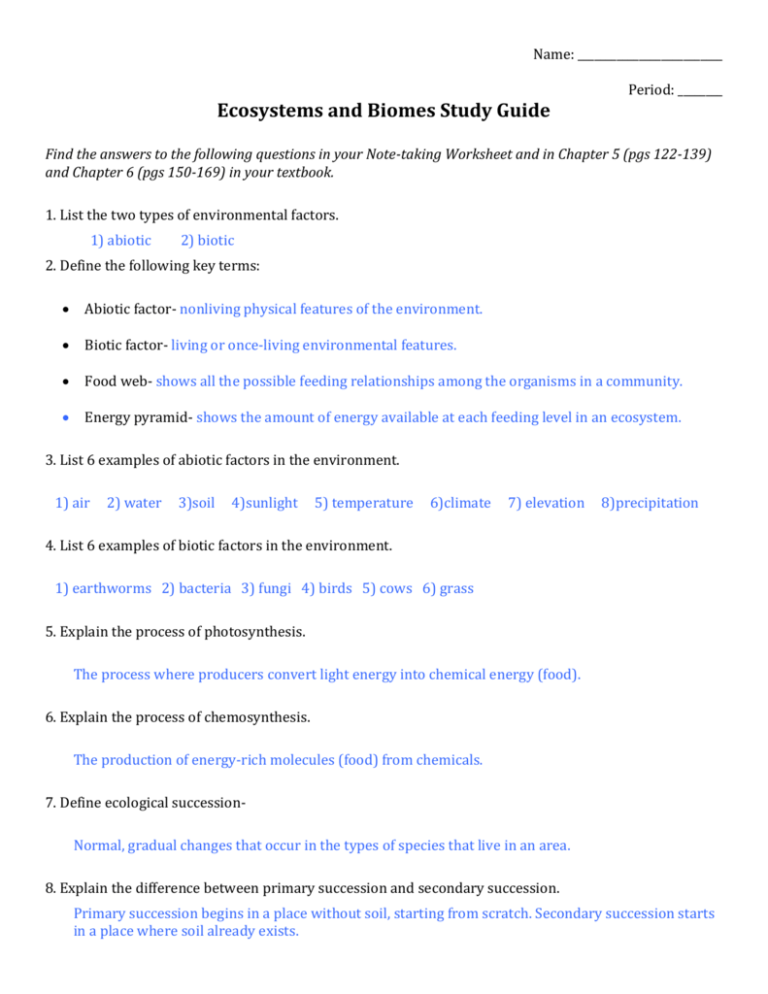
Name: __________________________ Period: ________ Ecosystems and Biomes Study Guide Find the answers to the following questions in your Note-taking Worksheet and in Chapter 5 (pgs 122-139) and Chapter 6 (pgs 150-169) in your textbook. 1. List the two types of environmental factors. 1) abiotic 2) biotic 2. Define the following key terms: Abiotic factor- nonliving physical features of the environment. Biotic factor- living or once-living environmental features. Food web- shows all the possible feeding relationships among the organisms in a community. Energy pyramid- shows the amount of energy available at each feeding level in an ecosystem. 3. List 6 examples of abiotic factors in the environment. 1) air 2) water 3)soil 4)sunlight 5) temperature 6)climate 7) elevation 8)precipitation 4. List 6 examples of biotic factors in the environment. 1) earthworms 2) bacteria 3) fungi 4) birds 5) cows 6) grass 5. Explain the process of photosynthesis. The process where producers convert light energy into chemical energy (food). 6. Explain the process of chemosynthesis. The production of energy-rich molecules (food) from chemicals. 7. Define ecological successionNormal, gradual changes that occur in the types of species that live in an area. 8. Explain the difference between primary succession and secondary succession. Primary succession begins in a place without soil, starting from scratch. Secondary succession starts in a place where soil already exists. Name: __________________________ Period: ________ 9. Give an example of an event that could cause an environment to go through secondary succession. Fire or Removal of buildings 10. Define the following key terms: Pioneer species- the first species in an ecosystem, such as lichens, that can grow on rock. Climax community- the stable stage of ecological diversity and balance. 11. List the 7 different biomes of the world and give a description of each: 1. Tundra- cold, dry, treeless region. Average temp -12 C. Less then 25 cm precipitation. 2. Taiga- cold forest. 35-100 cm precipitation. 3. Temperate deciduous forest- four distinct seasons, plants/trees lose leaves every autumn. 4. Temperate rain forest- temp: 9-12C, 200-400 cm precipitation. 5. Tropical rain forest- forest floor, understory, canopy, emergent. Great variety of organisms. 6. Desert- driest biome, populated with cacti and kangaroo rats. 7. Grasslands- dominated by grasses, perfect for raising cattle and sheep. 12. List 3 examples of a freshwater ecosystem. 1)rivers 2) streams 3)lakes 4)ponds 5)wetlands 13. List 4 examples of a saltwater ecosystem. 1)open oceans 2) coral reefs 3) seashores 4)estuaries

